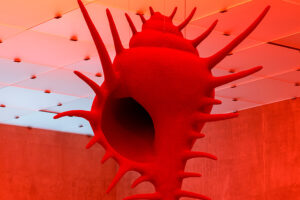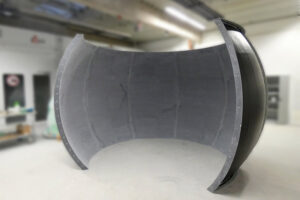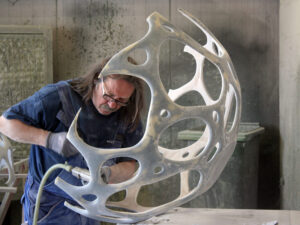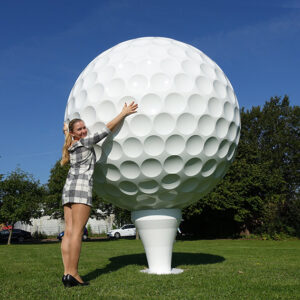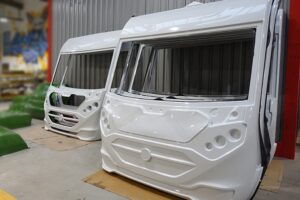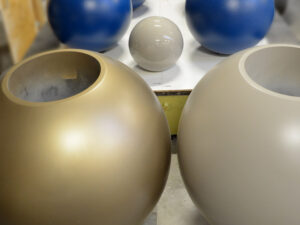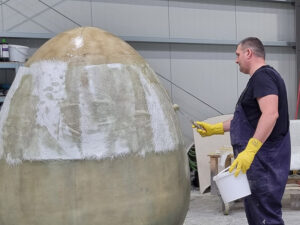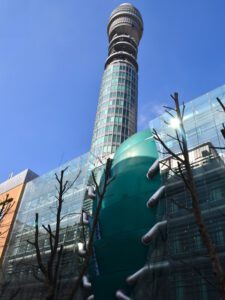
The majority of our objects are manufactured from glass fiber reinforced plastic (GRP) using hand lay-up. Whether figures, such as the popular mouse figure, architectural objects such as GRP façade elements or small series parts made of GRP.
The hand laminating process allows objects to be produced very well in small quantities in GRP.
The advantages of GRP are its corrosion resistance, low weight, safety, extreme durability, high elasticity and strength, rot-proof and maintenance-free properties, chemical resistance, high load-bearing capacity, fire protection design and many more.
Positive objects, for example made of rigid foam, can be coated with GRP using the hand laminate process. To ensure particularly high precision, GRP components are molded from a negative mold. In the first step, a negative mold is usually created to form GRP bodies. The desired fiber fabric (e.g. glass fiber mats) and the matrix (e.g. epoxy resin) are placed on the mold.


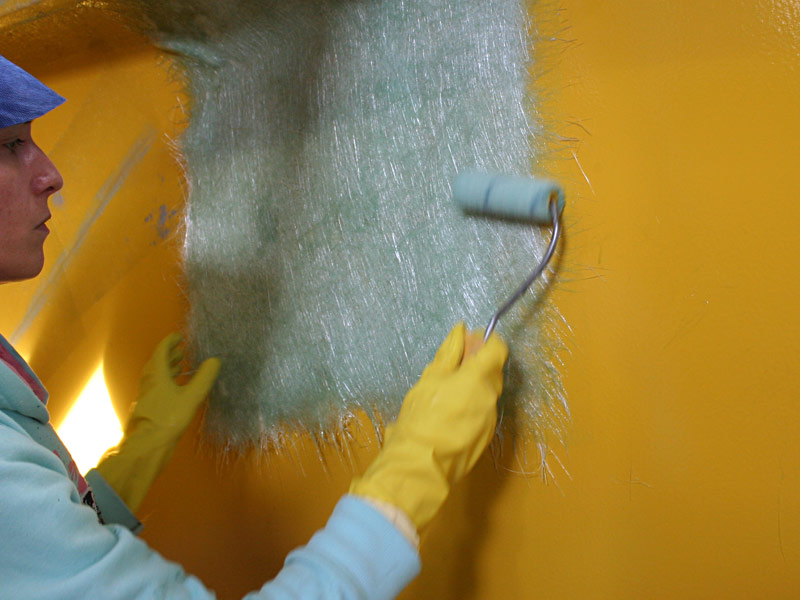
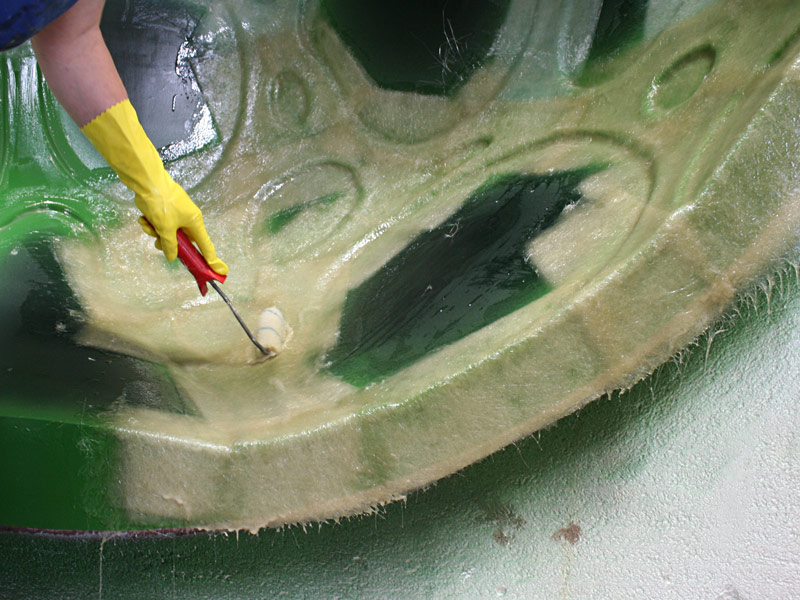
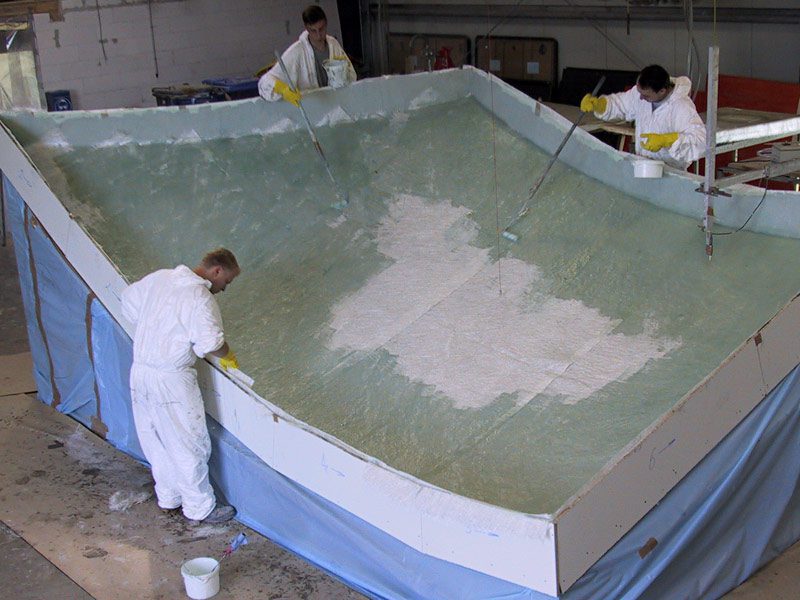

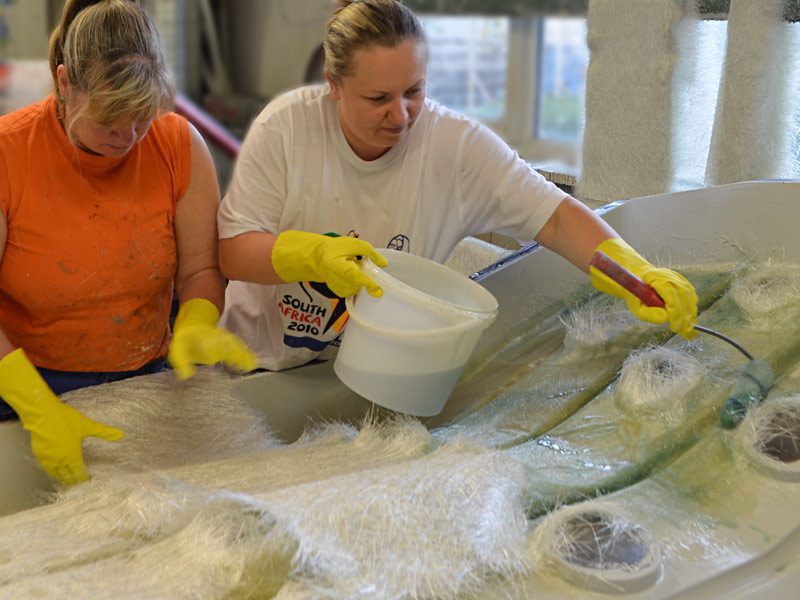
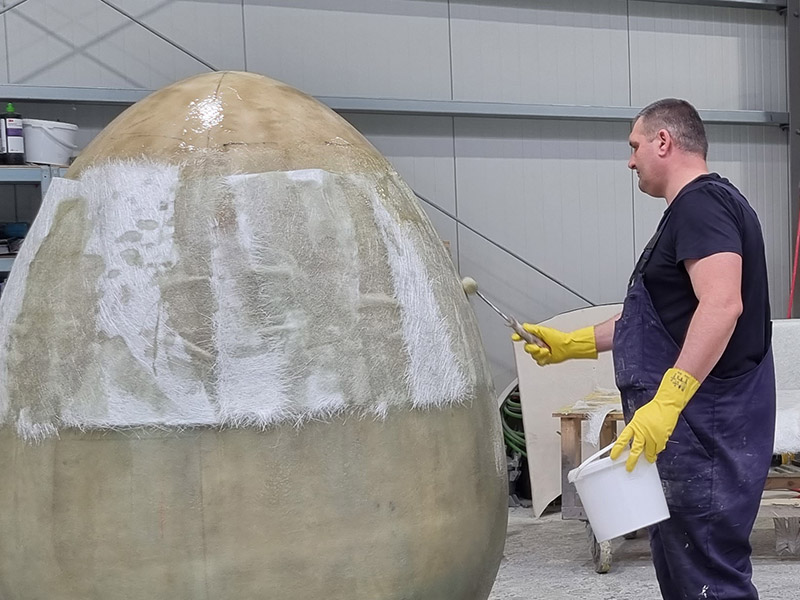


The negative mold is coated with a release wax so that the finished component can be easily removed from the mold after curing. The outermost layer is the gelcoat, which forms the outer visible layer and seals the laminate watertight. The gelcoat is applied directly to the release wax and is often colored with a pigment. The glass fiber mats are impregnated with the resin and inserted into the mold by hand in layers (laminate). There must be no air pockets, as these can reduce the overall strength. Air pockets are pressed out of the laminate with a hard roller or, in the vacuum process, sucked out by negative pressure between the mold and a covering film.
The positive mold is a basic body made of rigid foam, for example. This is encased in GRP. Depending on the material of the mold and the resin, a release layer is required so that the mold is not chemically attacked by the resin.
You are currently viewing a placeholder content from YouTube. To access the actual content, click the button below. Please note that doing so will share data with third-party providers.
More Information
